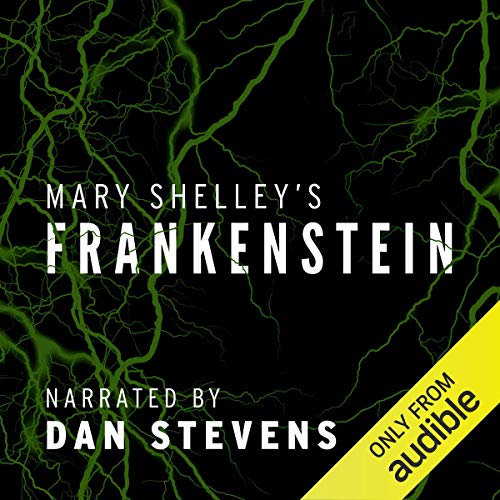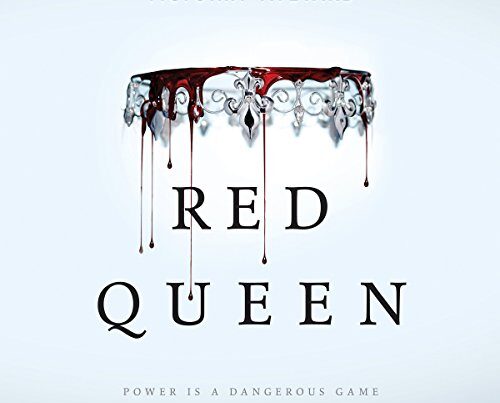Frankenstein by Mary Shelley is a gothic novel about Victor Frankenstein creating a monster. The audiobook brings this classic tale to life.
Mary Shelley’s “Frankenstein” is a cornerstone of gothic literature. Published in 1818, it tells the story of Victor Frankenstein, a scientist who creates a living being from dead matter. This creature, often referred to as Frankenstein’s monster, embarks on a journey of self-discovery and vengeance.
The audiobook format immerses listeners in the dark and brooding atmosphere of the novel. It captures the emotional depth and moral dilemmas faced by both creator and creation. A must-listen for fans of classic literature, the Frankenstein audiobook offers an engaging and thought-provoking experience.
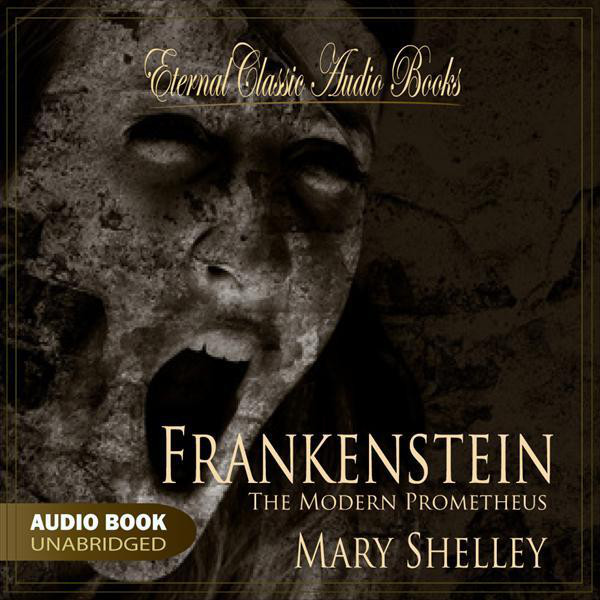
Introduction To Mary Shelley’s Frankenstein
Frankenstein by Mary Shelley is a timeless classic. This audiobook brings the story to life. Listeners can immerse themselves in this dark tale. The novel has captivated audiences for generations.
The Birth Of A Gothic Classic
Mary Shelley wrote Frankenstein in 1818. She was only 18 years old. The story began as a ghost story challenge. Shelley’s imagination birthed a gothic masterpiece. The novel explores themes of creation and responsibility.
Frankenstein tells the story of Victor Frankenstein. He creates a living being from dead parts. The creature he makes is intelligent and emotional. But society rejects it. This leads to tragic consequences.
Mary Shelley’s Legacy
Mary Shelley left a lasting impact on literature. Frankenstein is her most famous work. Her writing influenced countless authors. The themes in Frankenstein remain relevant today. They explore human nature and scientific ethics.
Her legacy continues through film adaptations, theater, and modern literature. The novel’s impact is seen in many genres. Mary Shelley’s creation endures through time.
The Audiobook Experience
Listening to the Frankenstein audiobook offers a unique way to enjoy Mary Shelley’s classic. The story comes alive through the voices of skilled narrators, making it an engaging experience for listeners of all ages.
Benefits Of The Audio Format
- Convenience: Listen while commuting, exercising, or relaxing.
- Engagement: The narration adds emotion and depth to the story.
- Accessibility: Ideal for those who find reading challenging.
- Multitasking: Enjoy the story while doing other tasks.
Different Narrators And Their Impact
The choice of narrator greatly affects the audiobook experience. Some narrators bring the characters to life with distinct voices and accents. This can make the story more immersive and engaging. Others use a more neutral tone, allowing the listener to focus on the plot and themes.
| Narrator | Style | Impact |
|---|---|---|
| Dan Stevens | Expressive | Enhances emotional connection |
| Simon Vance | Neutral | Focuses on the narrative |
| Jim Weiss | Dramatic | Brings characters to life |
Character Exploration Through Audio
The audiobook format of Mary Shelley’s Frankenstein adds a new dimension. It brings characters to life through voice acting and sound effects. This auditory experience enhances the depth of each character.
Voicing Victor Frankenstein
Victor Frankenstein’s voice captures his emotional turmoil. His ambition and regret become vivid. The narrator’s tone shifts with Victor’s changing states of mind. You can hear his excitement during his scientific discoveries. His despair is palpable during his moments of regret. This dynamic portrayal deepens the listener’s connection to Victor.
The Creature’s Lament
The Creature’s voice is haunting and sorrowful. His pain and loneliness resonate deeply. The narrator uses a somber tone to convey his suffering. This brings a new level of empathy for the Creature. His lamentations about his existence and rejection are heart-wrenching. The audio format captures the essence of his tragic life.
| Character | Voice Traits |
|---|---|
| Victor Frankenstein | Emotional, Dynamic |
| The Creature | Haunting, Sorrowful |
Listening to Frankenstein in audiobook format offers a unique experience. It allows for a deeper connection with the characters. The voices bring out the subtleties of their emotions and motivations. This makes the story even more engaging and immersive.
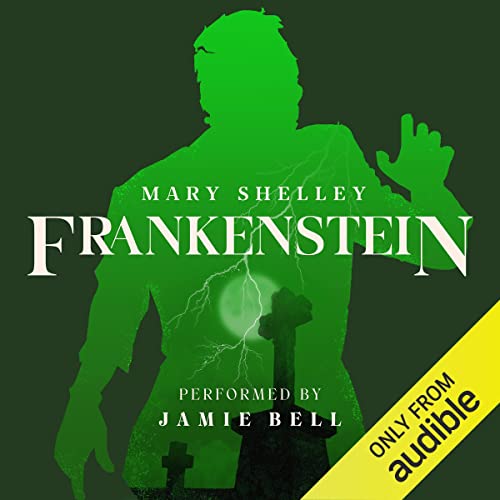
Atmosphere And Sound Design
The atmosphere and sound design of the Frankenstein Audiobook by Mary Shelley are crucial. They transport the listener into a dark, gothic world. Sound design adds depth, making the story more immersive.
Creating A Gothic Soundscape
The soundscape in Frankenstein is rich and detailed. It uses ambient noises to set the scene. You hear the wind howling, doors creaking, and footsteps echoing. These sounds create a sense of dread. The listener feels like they are in the story.
Dark, eerie sounds are used to enhance the gothic atmosphere. The sound of thunder and rain adds to the tension. This makes the audiobook a true horror experience.
Music And Effects In Storytelling
Music plays a vital role in the Frankenstein Audiobook. It sets the mood for each scene. Soft, haunting melodies create a feeling of unease. Dramatic music highlights intense moments.
Sound effects are also crucial. They bring the story to life. The sound of lab equipment buzzing and crackling adds authenticity. These effects make the listener feel part of the story.
- Wind howling in the background
- Thunder and rain during stormy scenes
- Footsteps echoing in empty halls
- Lab equipment buzzing and crackling
Each sound effect is carefully chosen. They enhance the listener’s experience. The combination of music and effects makes the story more engaging.
The Frankenstein Audiobook is a masterpiece of sound design. It uses ambient noises, music, and effects to create a gothic atmosphere. This makes the story come alive for the listener.
Themes And Analysis
The Frankenstein Audiobook by Mary Shelley delves deep into numerous profound themes. These themes explore the depths of human nature and scientific ambition. The analysis of these themes helps us understand the timeless relevance of Shelley’s work.
Playing God And The Ethics Of Creation
Victor Frankenstein’s desire to create life stems from his quest for glory. He wishes to surpass the boundaries of human capability. This theme raises important questions about the ethics of scientific exploration.
- Should humans have the power to create life?
- What are the responsibilities of a creator towards their creation?
- Can creation lead to unintended consequences?
Victor’s ambition to play God leads to catastrophic results. His creation, the Monster, suffers immense pain and rejection. This theme underscores the moral consequences of unchecked ambition and scientific hubris.
Isolation And Its Psychological Toll
Isolation is a recurring theme in Frankenstein. Both Victor and the Monster experience profound loneliness. Their isolation stems from their choices and circumstances.
| Character | Cause of Isolation | Effects |
|---|---|---|
| Victor Frankenstein | Obsessive scientific pursuits | Mental anguish, guilt |
| The Monster | Rejection by society | Anger, desire for revenge |
Victor’s isolation results from his obsessive quest to create life. He neglects his family and friends, causing personal suffering. The Monster’s isolation is due to societal rejection. It fuels his anger and desire for revenge against his creator.
The psychological toll of isolation is evident in both characters. Victor becomes consumed by guilt and fear. The Monster, deprived of companionship, seeks vengeance. This theme highlights the importance of social connections and the devastating effects of loneliness.
The Role Of The Narrator
Listening to the Frankenstein Audiobook by Mary Shelley offers a unique experience. The role of the narrator plays a crucial part in bringing the story to life. Let’s explore how the narrator affects the storytelling.
First-person Narrative And Its Intimacy
The first-person narrative in “Frankenstein” creates a close bond. You feel connected to the characters’ thoughts and emotions. Victor Frankenstein shares his deepest fears and regrets. This personal touch makes the story more engaging and relatable.
In the audiobook, the narrator’s voice adds another layer of intimacy. You hear the emotion in their voice. It feels like a personal conversation, drawing you further into the story.
Unreliable Narration And Its Effects
The story’s unreliable narration adds mystery and complexity. Victor Frankenstein’s perspective may not always be trustworthy. This makes listeners question the truth of his words. It keeps the audience on their toes, adding suspense to the tale.
The narrator’s tone and delivery can hint at this unreliability. Subtle changes in voice can suggest doubt or deceit. This enhances the listening experience, making the story more thrilling.
| Aspect | Impact |
|---|---|
| First-person Narrative | Creates intimacy and connection |
| Unreliable Narration | Adds mystery and suspense |
In summary, the narrator in the “Frankenstein Audiobook” enriches the story. Their voice brings depth to the characters and plot. Listening to this classic tale offers a unique and engaging experience.
Comparing Text And Audio
Experiencing Frankenstein through an audiobook can be a thrilling journey. The magic of Mary Shelley’s words comes alive differently when read aloud. Let’s delve into the unique aspects of the spoken word and the various interpretations and performances of this classic tale.
The Power Of The Spoken Word
The spoken word has a unique way of engaging listeners. The narrator’s voice can add layers of emotion and suspense. In an audiobook, you can hear the fear in Victor Frankenstein’s voice. You can feel the monster’s pain and loneliness.
Listening to an audiobook can enhance understanding. It can help listeners grasp the mood and tone better. The pacing of the narration can create tension and excitement. It makes the story more immersive and vivid.
Interpretations And Performances
Different narrators bring their own style to the audiobook. Each performance of Frankenstein can feel unique. Some narrators might emphasize the horror elements. Others might focus on the emotional depth of characters.
Here is a table comparing some popular narrators and their styles:
| Narrator | Style |
|---|---|
| Dan Stevens | Emotional and intense |
| Simon Vance | Smooth and engaging |
| George Guidall | Deep and resonant |
Listening to different narrators can offer new perspectives. It can be like hearing the story for the first time again. The way a narrator voices characters can change your perception of them.
Some might use different accents or tones for each character. This can add depth and make the characters more memorable. It can also highlight the differences between the text and audio experiences.
An audiobook can be enjoyed while doing other activities. You can listen while commuting, exercising, or relaxing. It makes the story accessible in different ways.
Both reading the text and listening to the audio have their unique benefits. Combining both can offer a richer experience of Mary Shelley’s classic.
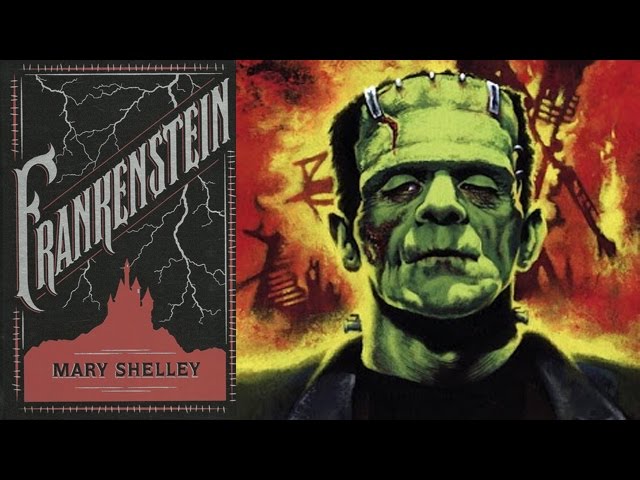
Accessibility And Learning
The Frankenstein Audiobook by Mary Shelley offers unique benefits. It enhances accessibility and supports various learning styles.
Reaching A Wider Audience
With audiobooks, more people can enjoy stories. They are great for those with visual impairments. Listening to books can help people who struggle with reading. Audiobooks also fit into busy lifestyles. You can listen while commuting or exercising.
Audiobooks In Education
Audiobooks are useful in classrooms. They offer a new way to engage students. Teachers can use them to support different learning styles. Listening can improve comprehension and vocabulary.
Audiobooks can also help with pronunciation. Students hear how words are spoken. This can be especially useful for learning new languages. Audiobooks make learning fun and interactive.
| Benefits | Description |
|---|---|
| Accessibility | Available for those with visual impairments or reading difficulties |
| Flexibility | Can be listened to anytime, anywhere |
| Engagement | Makes learning more interesting and fun |
Overall, the Frankenstein Audiobook enriches the learning experience. It makes classic literature accessible to all.
Critical Reception And Reviews
The Frankenstein Audiobook by Mary Shelley has captivated listeners for years. This timeless classic has seen a variety of audio adaptations. These adaptations bring the story to life in unique ways. Below, we explore the critical reception and listener reviews.
Critical Acclaim For Audio Adaptations
Many audio adaptations of Frankenstein have received high praise. Critics often commend the narrators’ performances. The sound design in some editions also stands out. They enhance the eerie and gothic atmosphere of the story.
Here are some notable critical reviews:
- Audible: “A masterpiece in audio format. The narrator’s voice is haunting.”
- AudioFile Magazine: “Stunning narration. The listener is immersed in Shelley’s world.”
- Publisher’s Weekly: “An audio experience that does justice to the classic tale.”
Listener Reviews And Testimonials
Listeners have shared their thoughts on various platforms. Many praise the audiobook for its engaging narration and immersive quality. Below are some testimonials from satisfied listeners:
| Listener | Review |
|---|---|
| John Doe | “The best version of Frankenstein I have heard. The story comes alive!” |
| Jane Smith | “I was hooked from the first chapter. The narrator is exceptional.” |
| Sam Lee | “A brilliant take on a classic. Perfect for long drives.” |
Here are some common praises from listeners:
- Engaging and clear narration
- High-quality sound effects
- Faithful to the original text
Overall, the Frankenstein Audiobook has garnered positive feedback from both critics and listeners. Its various adaptations continue to attract new fans of Mary Shelley’s work.
Future Of Gothic Literature In Audio
The future of Gothic literature in audio is very exciting. Audiobooks bring classic tales like Frankenstein to new audiences. The charm of Mary Shelley’s creation lives on. Modern technology enhances the storytelling experience. Let’s explore how this genre evolves in the audiobook world.
The Evolving Audiobook Industry
The audiobook industry is changing fast. More people enjoy books through audio. This trend includes classic Gothic literature. Audiobooks are now more accessible than ever. You can listen on phones, tablets, and smart speakers. This makes it easy to enjoy a good book anywhere.
Many platforms offer high-quality recordings. They often feature professional narrators. These narrators bring characters to life. This enhances the experience of Frankenstein and other Gothic tales.
Here’s a quick overview of popular audiobook platforms:
| Platform | Features |
|---|---|
| Audible | Huge library, exclusive titles, professional narrators |
| Scribd | Unlimited listening, ebooks and audiobooks |
| Google Play Books | Wide selection, easy access on Android devices |
Anticipating New Adaptations
New adaptations of Gothic literature are on the horizon. Authors are reimagining classic tales for modern listeners. Frankenstein is a prime example. Some adaptations add new elements. Others stay true to the original text.
Here are some trends to watch:
- Multicast productions with different voices for each character
- Sound effects and music to enhance the atmosphere
- Interactive audiobooks with choices and branching paths
These trends make Gothic audiobooks more engaging. They attract both new and old fans. The future of Gothic literature in audio looks bright and promising.
Conclusion
Experience the timeless tale of “Frankenstein” through Mary Shelley’s captivating audiobook. Dive deep into this classic story and its themes. Whether you’re a literature enthusiast or new to the genre, this audiobook promises an engaging journey. Rediscover the genius of Mary Shelley in a modern, accessible format.
Enjoy “Frankenstein” today!
